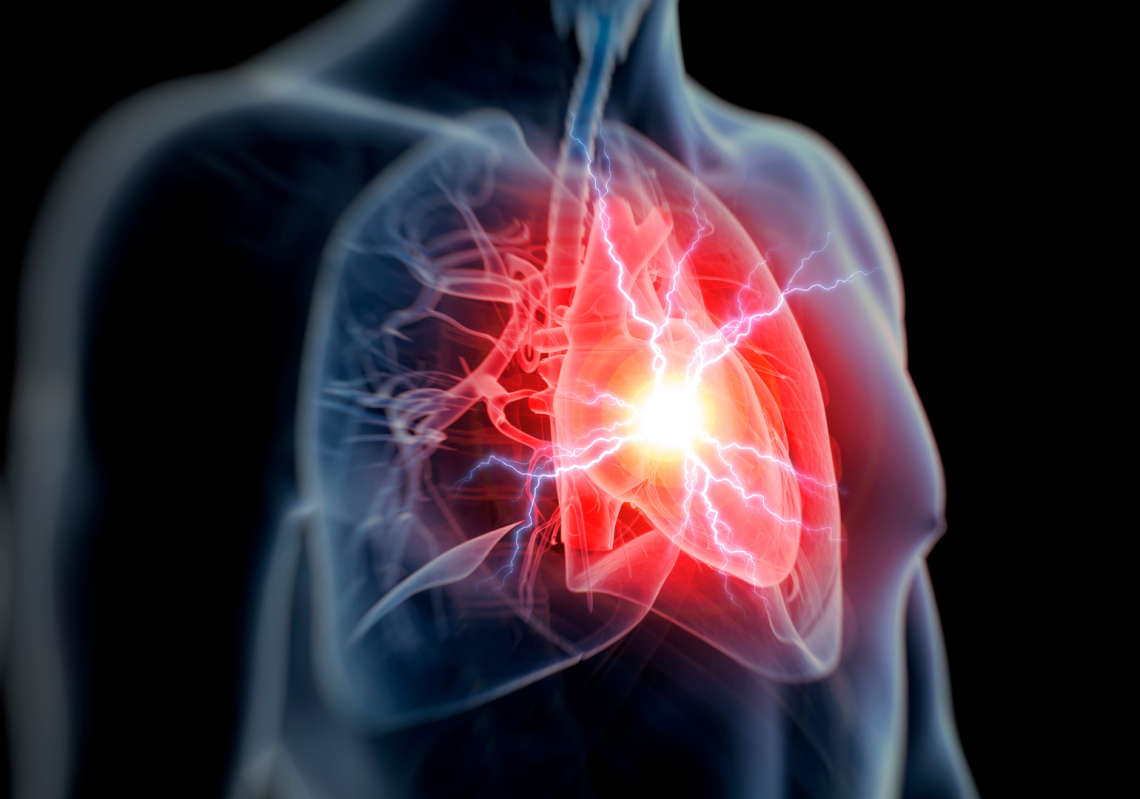Detecting forces within the body is not new, but doing so quickly in a non-invasive way could be a gamechanger for the half a million Australians living with heart failure – and those yet to be impacted.
Human bodies are like complex symphonies, with each organ and function orchestrating in harmony to maintain balance. The beat of one’s heart, rhythmic breath and the pulsating flow of blood through arteries and veins keep people alive – and are vital indicators of internal health.
Scientists and medical professionals can interpret these signals to diagnose conditions, monitor health and even predict potential ailments before they arise.

Professor Gaetano Gargiulo, from the School of Engineering, Design and Built Environment at Western Sydney University, is captivated by these internal physiological forces.
He wanted to design a non-invasive sensor system that could detect and manage heart failure – which afflicts nearly half a million Australians, with more than 60,000 new diagnoses each year.
“Heart failure is the new pandemic, Gargiulo told create. “We live longer, so there’s more time for lifestyle damages to set in. Poor diets, smoking, abuse of alcohol and sedentary lifestyles all contribute to heart failure, which impacts many young people too.”
The body’s vital signs are heartbeat, respiration and temperature. Gargiulo wanted his sensor to measure all three.
“Back in 2016, I had the idea of measuring the distributed force across the entire chest – the forces of both the heart and lungs – using supple electro-resistive bands, with resistance changing with the stretch,” he said.
“The moving organs impress tiny movements and vibrations to the chest wall – in the order of micrometres, which are 1000 times smaller than millimetres – which elicit changes in the bands’ resistance. This idea evolved into a single direct sensor that targets specific organs and diseases: SaiiV.
“And unlike other heart failure monitoring systems available on the global market, I wanted my device to be completely non-invasive.”
Gamechanger
Devices that can monitor our vital signs have been around for decades:
- Blood pressure cuffs constrict the arm to gauge arterial pressure.
- Ultrasounds capture sound waves bouncing off cardiac structures.
- Electrocardiograms (ECGs) trace the electrical activity of the heart.
- Right heart catheters thread through veins in the neck, arm or groin to measure pressure within the heart and lungs.
- Sensors measure respiration.
- Pulse oximeters, often as finger clips, determine blood oxygen saturation.
- Smartwatches now monitor heart rate.
The Sensor-based Monitoring System for the Early Detection and Improved Management of Heart Failure (SaiiV), developed by Gargiulo and his team of researchers at Western Sydney University and the University of Sydney, aims to deliver quicker and more extensive information more comfortably.

“It’s like a competitor for ultrasound, an extension of the right heart catheter, and a much more accurate version of an ECG, which only measures the electrical activity of the heart, not its mechanical activity,” Gargiulo explained. “SaiiV really is a gamechanger.
“At its core is a novel sensor technology designed to morph with the body, which detects the delicate forces applied to the chest wall by the beating heart. It distinguishes the movements of cardiac valves and chambers, and calculates cardiac stroke volume.”
The device is placed over the centre of the chest near the bottom of the rib cage. It consists of an elastic strap to which the sensor is attached before being positioned. Gargiulo’s team is also designing an app to display signals, key data and risk scores, enabling clinicians to offer personalised care.
He hopes the device will help people as they age, reducing hospital admissions and readmissions for heart failure, and minimising the economic burden of the disease.
“SaiiV can detect early-onset cardiac failure, reveal the extent of heart damage and assess the effectiveness of medication.”
And importantly, it can’t be felt.
“The device is very soft and works over your clothes,” Gargiulo said. “The frontal part is the only interface with the body and it’s made of skin-safe silicone. You just put it on and off you go.”
Multiple uses
In the future, SaiiV could be used in a variety of settings. Including:
- Early screening of heart disease in a GP’s office
- Providing comprehensive snapshots of heart conditions in hospital settings
- Follow-ups for patients after heart procedures or arterial blockages
- Smart triage for individuals presenting at the emergency department with chest pain or breathing difficulties
The device also holds potential monitoring benefits for the general population.
A GP could use it during routine check-ups, to monitor the heartbeat and breathing of pregnant women, or even to track fetal movement.
Individuals at home could use it to monitor their heart health or analyse how their heart responds to physical activity.
“The possibilities are endless,” Gargiulo said. “Plus it can be worn for a few minutes to a few hours or even a few days to provide a more detailed snapshot.”
Gargiulo is seeking grants from partners and collaboration from cardiologists to advance SaiiV from prototype to product and eventually bring it to market. He said creating a device that could help hundreds of thousands of Australians would be incredible.
“After so long, it would be wonderful to provide a product that could make a real difference.”
The project is one of seven research and development projects that has secured funding from the NSW Smart Sensing Network’s (NSSN) Grand Challenges Fund this year, and is being supported by industry partner Medical Monitoring Solutions.



